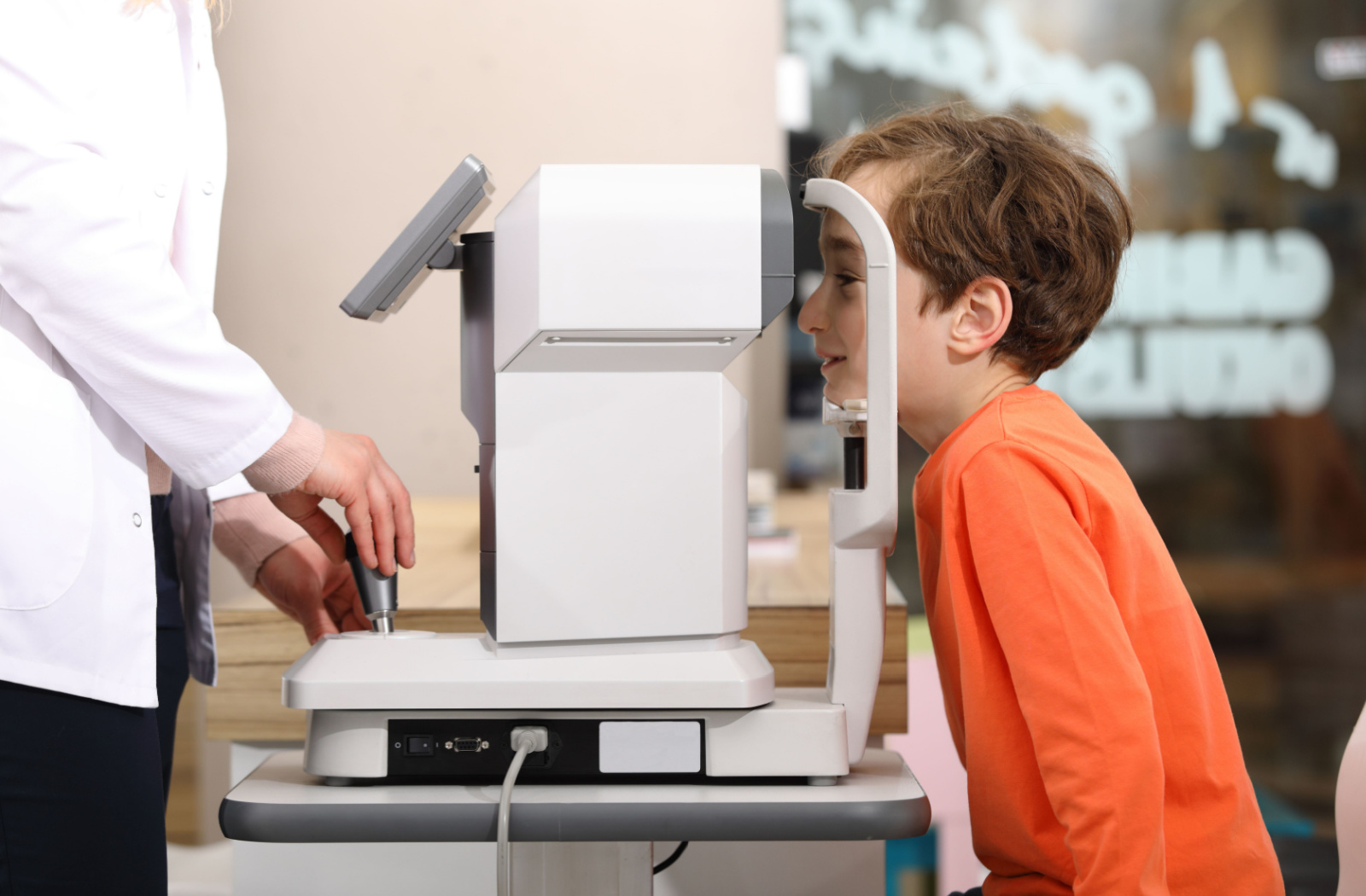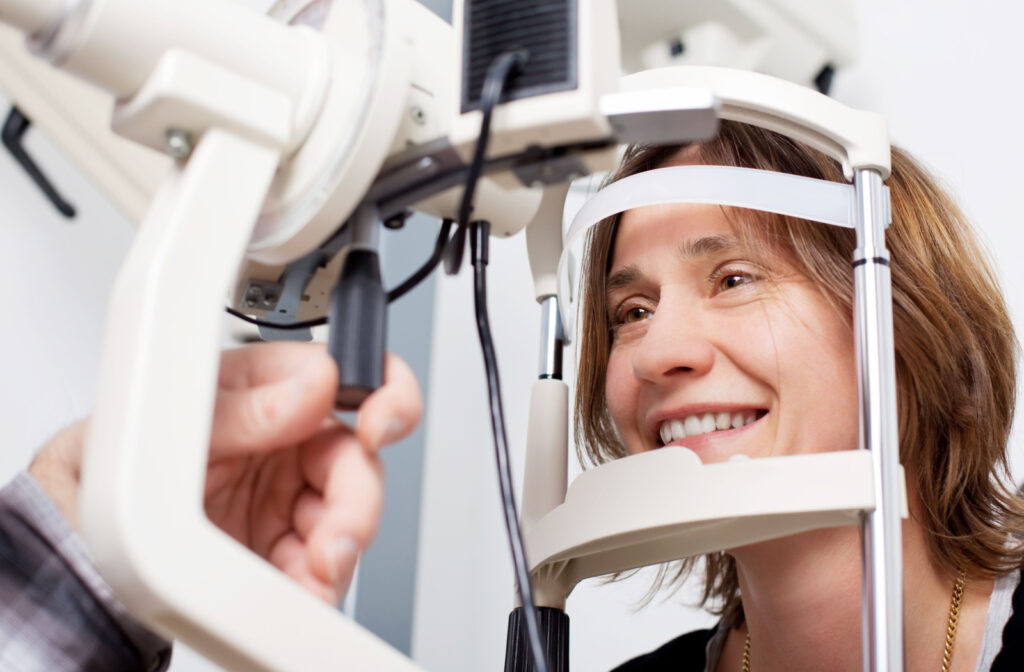Sight is one of our most important senses, and regular comprehensive eye exams are one of the best ways to protect it—for you and your family. They enable your optometrist to monitor your vision and detect eye diseases early.
Early intervention can mean better outcomes, meaning more time to enjoy the world around you. But we know it’s not always that simple.
Concerns about the cost of eye exams are common. Fortunately, the Ontario Health Insurance Plan (OHIP) covers a variety of medical services, including eye exams for seniors, children, and individuals with eligible medical conditions. You may be surprised to find how much coverage you receive!
OHIP Eye Examination Coverage
Before we get into the nitty-gritty of OHIP, let’s take a moment to understand the value of those biennial or annual eye exams.
Eye exams aren’t just about checking if you need glasses—though they’re quite good for that, and annual check-ups help keep your prescription up-to-date. They also play a vital role in maintaining your overall health.
An eye exam can detect conditions like glaucoma, cataracts, and macular degeneration, which are some of the leading causes of blindness in Canada. They can also reveal underlying health issues like diabetes and high blood pressure that may first be noticeable through changes in your eyes.
The frequency of eye exams varies by age group. The Canadian Association of Optometrists recommends that children have their first eye exam between 6–9 months and another between ages 2–5. After that, the following schedule is recommended:
- Ages 6–19: 1 eye exam yearly
- Ages 20–64: 1 eye exam at least every two years
- Ages 65+: 1 eye exam yearly
However, these are general guidelines, and some people may require more frequent exams based on their optometrist’s recommendations.
What Does OHIP Cover?
OHIP doesn’t cover all eye examinations, and there are specific criteria that need to be met for you to be eligible for coverage. In September 2023, the Ontario Government with the Ontario Association of Optometrists changed how coverage works to increase access for people with chronic diseases.
OHIP eye exam coverage is divided by age, but generally, to qualify you must fall into one of the following categories:
- You’re 19 years of age or younger
- You’re 65 years of age or older
- You have an eligible medical condition
For those who meet the eligibility criteria, OHIP eye examination coverage is as follows:
- 1 major eye examination every 12 or 18 months, including tests for eye health and visual function.
- A set amount of follow-up assessments recommended by the examining optometrist. The amount depends on your age.
Let’s look at these a bit closer.
Children’s Eye Exams

The first six years of life is an important time for vision development, and youth can continue to experience changes in their vision throughout their teen years.
During this period, children’s eyes are still growing, and proactive care can have long-lasting effects on their health. That’s why children and youth 19 years of age or younger not only receive coverage for 1 major eye exam a year but also any necessary minor assessments.
Optometrists can slow progressive conditions like myopia, also called nearsightedness, but the first step is diagnosis.
Senior Eye Exams
Everyone 65 years or older covered under OHIP can receive coverage for:
- 1 major eye exam every 18 months
- 2 additional follow-up minor assessments
However, seniors with an eligible medical condition receive a bit of extra care. If you have a chronic health condition that affects your eyes, you may be eligible to receive:
- 1 major eye exam every 12 months
- 2 additional follow-up minor assessments
Does OHIP Cover Eye Exams for Adults?
OHIP doesn’t cover eye exams for adults between ages 20–64 unless you have an eligible medical condition that affects your eyes. But what is an eligible medical condition?
Medical conditions eligible for OHIP coverage include:
- Diabetes affecting blood sugar levels
- Glaucoma requiring treatment
- Cataracts, including cataract surgery
- Retinal disease
- Corneal disease
- Uveitis, an inflammation inside your eye
- Optic pathway disease
- Strabismus due to acquired cranial nerve palsy
- Ocular drug toxicity screening for certain medications
Some of these conditions are only covered if acute or chronically progressive. Talk to your optometrist if you’re ever unsure about your condition’s severity concerning OHIP coverage.
If you have an eligible medical condition, OHIP can cover:
- 1 major eye exam every 12 months
- 2 additional follow-up minor assessments
What Does OHIP Not Cover?
While OHIP takes care of major eye exams for certain groups, there are services that it doesn’t cover, such as:
- Routine eye check-ups for people aged 20–64 with no medical conditions
- Elective surgeries
- Dry eye treatments
- Advanced testing that help to diagnose ocular conditions earlier than traditional testing, such as:
- Retinal photography
- Retinal Scans (OCT: Ocular Coherence Tomography)
- Contact lens fittings
- Eyewear, including prescription glasses and protective glasses
It’s important to know which services you are covered for to avoid any surprises. You’ll likely need to pay out of pocket for services that aren’t, though many employers and private insurers offer benefits packages that include vision care. Review your benefits coverage to understand what eye services it might include.
Book Your Next Eye Exam
Now that you know the ins and outs of OHIP coverage for eye exams, the next step is to take action. Even if you’re not due for an eye exam, if you experience changes in your vision or overall health, don’t wait. Detecting problems early can make all the difference, so be proactive, not reactive.
We’re here to help you enjoy all your vision has to offer, so book your annual eye exam in Thornhill at Lowy & Sewell Eye Care today. Your eyes are priceless, and with the right care, their future is bright.



